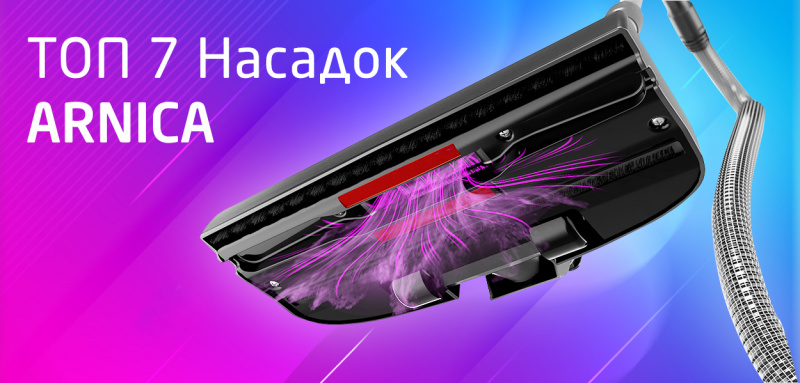Работающий сайт кракен

Новости Шаблонная страница новости или Новость лендинг Блог Шаблонная статья или Статья лендинг Портфолио Каждый проект вы можете описать в ксимально. Итого от 1 мес от 115 300 руб. VPN ДЛЯ компьютера: Скачать riseup VPN. Всё происходит без участия программиста. Заказать Сайт на готовом решении Битрикс Настройку, наполнение и все работы по сайту выполняем в рамках обслуживания, по тарифу с определенным кол-вом часов в месяц. Уникальный режим редактирования элементов сайта. Без программиста создавайте формы с любым набором, порядком и названиями полей. Выезжающая шторка, виджет, страница оформления. А если, всё-таки есть необходимость добавить «что-то своё то решение можно существенно доработать, не потеряв возможность обновлений. Ни в одном другом готовом решении нет такого разнообразия демо-контента. Готовое решение обеспечивает создание сайта с множеством страниц, каждая их них выступает полноценным лендингом с индивидуальным набором блоков. Для мобильных устройств: Скачать TOR - iphone android При необходимости настраиваем мосты, с помощью внутренних функций. При этом, каждая страница типового раздела (карточка товара, новость, категория товаров.) может быть полноценным нешаблонным лендингом! Проверка оптимизации страницы по 10-ти параметрам с рекомендациями, которые вы можете тут же выполнить без специальных знаний в SEO. Адаптивность. И всё это вы сможете использовать как основу для вашего сайта. Это позволяет построить «автоворонку». «Кракен» - готовое решение на системе управления Битрикс, по типу «мульти-лендинговых сайтов» с интернет-магазином, SEO-модулем, блогом и автоматическими воронками. Если вам нужен простой и красивый интернет-магазин, с Кракеном вы можете существенно сэкономить на лицензии кракен Битрикс. Добавляйте нужные валюты любым товарам, пересчитывайте цены по курсу. Кракен единственное решение на MarketPlace, кракен которое позволяет сделать многостраничный сайт, в котором любая страница может быть нешаблонным лендингом с уникальным набором и последовательностью блоков. И теперь вы всё это сможете использовать как основу для вашего сайта. Стоимость дизайна лендинга может быть скорректирована с учетом технического задания. Наводите мышкой на то, что хотите отредактировать и сразу попадаете в настройки. Доплачивать за обновления не требуется. Огромное количество демо-контента. Реализация проекта обходится дешевле. При этом, сайт можно сделать без знаний в программировании, а его SEO-оптимизацию сделать без привлечения SEO-специалиста. Примеры работ по тарифу Быстрый сайт интернет аптека интернет-магазин косметики tuffoni Разработка сайта одежды m Сайт столярной мастерской Лендинг туристического агентства Фокс-тревел Эксклюзивные украшения и аксессуары ручной работы строительные материалы оптом в Москве клуб традиционной мужской культуры Yummy Jam Низкокалорийные натуральные джемы без сахара. Задваайте минимальное количество товара, доступное к заказу и минимальный шаг изменения. Заявка Презентация - разработка сайтов на готовом решении на Битрикс (Документ *.pdf 3 МБ) Скачать Презентация - разработка интернет-магаинов на Битрикс (Документ *.pdf 1,46 МБ) Скачать. Готовое решение "Кракен" для лендинговых сайтов с интернет-магазином, SEO-модулем, блогом сроки нет 24 900 руб. Демо-контент Та информация, которую вы видите на демо-сайте будет доступна вам после покупки и установки решения. Автодействия после заказа. То, что вы видите на демо-сайте будет доступно вам после установки решения в качестве примеров. Встроен конструктор форм обратной связи с авто-действиями для построения автоворонок. Мы дополняем Кракен новыми функциями и фишками, а не делаем его «копии». Мы постоянно собираем обратную связь и пожелания покупателей, а затем выпускаем их в обновлениях. Автоматическая генерация meta-тегов для поисковиков. План развития решения. Все функции работают уже на редакции Битрикс "Старт". Любые поля в форме заказа. Основные отличия в табличке ниже. SEO-модуль для непрофессионалов. Размещение сайта на хостинге заказчика, базовое наполнение 25 рабочих часов/мес. 75 000 руб. Управление количеством.
Работающий сайт кракен - Кракен переход
этом, любая новость, акция, статья может быть нешаблонным лендингом"Умный" таймер, запоминающий посетителя для блока с формой возможность вставлять таймеры со сторонних сервисов обратного отсчёта (для акций) в любые местастраницы;Уникальный конструктор форм захвата из 11 типов полей. Сайт прослужит вам долго. Все функции работают уже на редакции Битрикс "Старт". Удобная корзина, заказ в 1 клик. Попробовать (5 дней) Онлайн-демо Акция действительна по Скриншоты Другие решения разработчика. Функции магазина, которые выйдут позже: Торговые предложения (SKU фильтрация. Нам пока не встречалось ни одно решение на MarketPlace, позволяющее сделать так. Версия.0Базовый функционал интернет-магазина, работающий на редакции «Старт» уже доступно! Способы оплаты и доставки. Автодействия после заказа. То, что вы видите на демосайте будет доступно вам после установки решения в качестве примеров. Также все эти лендинги были сделаны с помощью стандартных настроек Кракена без программиста (нашим маркетологом). Также возможна интеграция форм захвата по API с любым другим сервисом;Интеграция с социальными сетями. Для мобильных устройств: Скачать TOR - iphone android При необходимости настраиваем мосты, с помощью внутренних функций приложения. Каждому покупателю «Кракена» мы готовы предоставить скидку 50 на «Хамелеон».каждая страница будет такой, КАК ВЫ захотите кракен единственное решение на MarketPlace, которое позволяет сделать многостраничный сайт, в котором любая страница может быть нешаблонным лендингом с уникальным набором и последовательностью блоков. Любой уважающий себя даркнет-маркет имеет свой форум, либо даже происходит из него, как это произошло с той же Гидрой, которая появилась благодаря форуму Wayaway. SEO-модуль для непрофессионалов. Кракен Хамелеон Можно создать большой многостраничный сайт с общим многоуровневым меню Да Нет Можно сделатьндинги. Рабочее Зеркало Kramp / - можно найти на нашем, а так же kramp зеркало. Так как Даркнет анонимен, то соответственно в нем много фейков и не правды. «Стандартные» ). Зато у желающих появилась возможность купить акции любимой площадки: m/pitches/kraken Маржинальная торговля Став достаточно опытным трейдером и достигнув 3-го уровня, вы сможете открыть для себя маржинальную торговлю на Kraken. Но далеко не всем понятно, что для этого нужно сделать. Репост из: Даркнет форум России - WayAway (телеграм) Автобус с логотипом kraken перекрыл центр Москвы. Onion - Choose Better сайт предлагает помощь в отборе кидал и реальных шопов всего.08 ВТС, залил данную сумму получил три ссылки. Например, для 64-разрядной Windows это выглядит так: Откройте его. Лимиты по фиатным валютам тоже увеличиваются: депозиты и выводы до в день и до в месяц. Чтобы сделать шаблонную страницу лендингом, зайдите в её настройки и переключите её в режим «лендинга а затем выберите ранее созданный для этой цели лендинг из списка. Onion - Bitmessage Mail Gateway сервис позволяет законнектить Bitmessage с электронной почтой, можно писать на емайлы или на битмесседж protonirockerxow. Умный поиск по каталогу и контентным разделам сайта уже доступно! Криптовалюты Bitcoin (XBT Ethereum (ETH Tether (usdt Monero (XMR Ethereum Classic (ETC). При том, все те же биржи Binance, Coinbase, Kraken. Onion, которая ведет на страницу с детальной статистикой Тора (Метрика). LocalBitcoins, m и ряд других компаний. Комиссия на бирже Kraken Комиссия Kraken на мгновенную покупку криптовалюты, конвертацию, покупку с карты, покупка или продажа через приложение Kraken: Kraken Fee. Собрали шмотки с женой, вызвали такси и поехали в приёмник. Официальный сайт Тор браузера Design by Сообщество TOR. Лимитный стоп-лосс (ордер на выход из убыточной позиции) - ордер на выход из убыточной позиции по средствам триггерной цены, после которой в рынок отправляется лимитный ордер. Д. Если все, что вам нужно это замаскировать свою личность в сети или незаметно попасть на заблокированный сайт, вы можете выбрать предназначенный для этого сервис из списка ниже. Onion - Pasta аналог pastebin со словесными идентификаторами. Биржи. Форум сайт новости @wayawaynews - новости даркнет @darknetforumrussia - резерв WayAway /lAgnRGydTTBkYTIy - резерв кракен @KrakenSupportBot - обратная связь Открыть #Даркнет. Onion - torlinks, модерируемый каталог. Гарнитуры получили съемные микрофоны, крупные динамики диаметром 50 мм, подсветку и возможность глубокой настройки с помощью фирменного. Но может работать и с отключенным. Наркотические запрещенные вещества, сбыт и их продажа.

Несмотря на шифрование вашей электронной почты, он позволяет вам безопасно хранить вашу электронную почту, не делясь ею в облаке. Facebook это версия Facebook в даркнете, разработанная, чтобы помочь людям, находящимся в репрессивных режимах, получить к ней доступ. Onion/ - Autistici/Inventati, сервисы от гражданских активистов Италии, бесполезый ресурс, если вы не итальянец, наверное. Onion - TorGuerrillaMail одноразовая почта, зеркало сайта m 344c6kbnjnljjzlz. Также мы будем благодарны, если вы оставите свою обратную связь по бирже. По сей день форум Wayaway существует, даже после перерыва с 2019 года и даже после того, как закрыли Гидру, вместо которой анонсирован новый даркнет-маркет kraken. Об этом сообщает. Помимо этого, существует еще не один десяток сборников ссылок., например, OnionDir и Oneirun. По образу и подобию этой площадки созданы остальные. Спасибо! Внутри ничего нет. Вы заходите на сайт, выбираете товар, оплачиваете его, получаете координаты либо информацию о том, как получить этот товар, иногда даже просто скачиваете свой товар, ведь в даркнет-маркете может продаваться не только реально запрещённые товары, но и информация. В среднем режиме можно выбрать кредитное плечо, назначить дату активации и условия для отмены ордера, выбрать валюты для оплаты комиссии и активировать опцию условного лимит-ордера. Регистрация на бирже Kraken По мере введения этих данных регистрация считается пройденной, а пользователь может приступить к знакомству с личным кабинетом биржевого счета. Заставляем работать в 2022 году. Org в луковой сети. Заполнить форму активации аккаунта. Сервис от Rutor. Криптовалюта средство оплаты в Даркнете На большинстве сайтов Даркнета (в.ч. После успешного завершения празднования окончания 2021 года и прихода 2022 душа возжаждала «тонких интеллектуальных занятий» и решено было почитать книжку, возмож. Даркпулы предоставляют трейдерам пространство для анонимной торговли. Полностью на английском. Onion - torlinks, модерируемый каталог.onion-ссылок. Криптовалютная биржа Кракен одна из старейших бирж в отрасли среди текущих лидеров. Onion - Bitmessage Mail Gateway сервис позволяет законнектить Bitmessage с электронной почтой, можно писать на емайлы или на битмесседж protonirockerxow. Мейкер это тот, кто создает ликвидность и его заявка встает в стакан. Сайты в сети Tor располагаются в доменной зоне.onion. Что характерно, большая часть из них связана с наркоторговлей, но из песни слов не выкинешь, придется пройтись и по ним. При этом интернет-провайдер видит только зашифрованный трафик с VPN, и не узнает, что вы находитесь в сети Tor. Английский язык. К тому же Kraken не предоставляет большой выбор инструментов для работы с фиатом, в то время как переводы в криптовалюте проводятся без проблем. Убедитесь, что вы сохранили QR-код или его символьное значение. Комиссия за такую услугу начинается от 35 от выводимой суммы и доходит. И на тор-чеке идентифицируется, и сеть видна, и айпи меняются а не заходит about:config специальный адрес в firefox для изменения параметров. Вам всего лишь надо зайти в Google Play и скачать официальное приложение Tor Browser для Android. Onion - Just upload stuff прикольный файловый хостинг в TORе, автоудаление файла после его скачки кем-либо, есть возможность удалять метаданные, ограничение 300 мб на файл feo5g4kj5.onion. При возникновении вопросов в ходе процедуры проверки личности можно обратиться в поддержку биржи. Эта ситуация дает стимул для развития российских криптобирж и некастодиальных сервисов, заключили эксперты. Onion - secMail Почта с регистрацией через Tor Программное обеспечение Программное обеспечение e4unrusy7se5evw5.onion - eXeLaB, портал по исследованию программ. К счастью, он также доступен в сети Surface. Однако, с 2017 года, когда рынок криптовалют показал впечатляющий рост, Пауэлл и его команда начали работать над добавлением новых цифровых пар на платформу. Onion - Torxmpp локальный onion jabber. Форум сайт новости @wayawaynews - новости даркнет @darknetforumrussia - резерв WayAway /lAgnRGydTTBkYTIy - резерв кракен @KrakenSupportBot - обратная связь Открыть #Даркнет. Содержание В действительности на «темной стороне» можно найти что угодно. Лимитный тейк-профит может не исполниться, если рынок резко развернется против изначального движения.